How long after planting do potatoes sprout and what if there are no shoots?

It is difficult to imagine a traditional domestic dacha without potato beds. Potatoes form the basis of most people's diet. First and second courses are prepared from it, baked, boiled, fried. At the same time, growing potatoes is not difficult at all. But in order to obtain a generous harvest, it is important to control the germination of the planted crop. To do this, you need to know the timing of the appearance of the first shoots. If the time has already come, and all the seedlings are not visible, promptly taken measures will help not to lose the harvest.
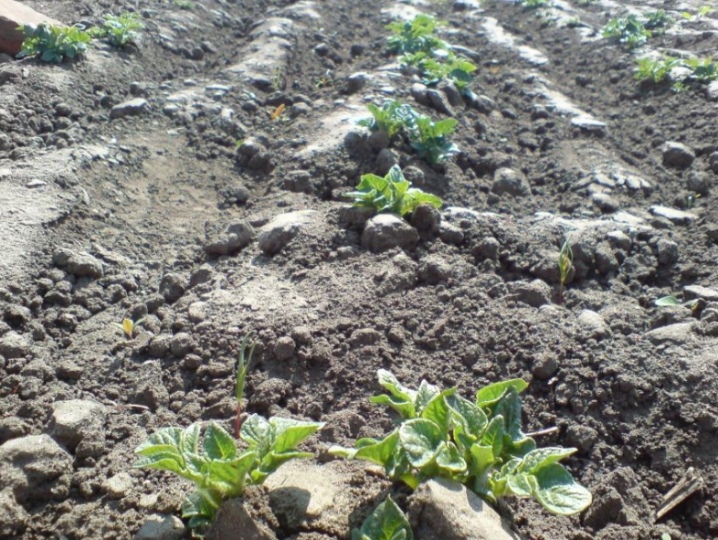
Influencing factors
Various factors contribute to poor germination of potatoes.
- Unsuccessful variety. Premature planting of late and mid-season potato varieties can lead to the death of seedlings in frost.
- Potatoes do not sprout in too cold soil. At temperatures lower than required, tubers of any variety can freeze and die. It is important to choose the landing date deliberately.
- In waterlogged soil, potatoes most often deteriorate.
- Illiquid planting material. If rotten or damaged tubers are planted or there are no eyes on them, there is a high probability that the seedlings will not wait.
- Bad soil. In the process of digging up the soil, it is advisable to add minerals. You can also fertilize with humus.
- Pests. Bear insects are also capable of damaging the tubers before the shoots sprout. A few weeks before the planned planting, it is recommended to carry out the treatment. And the most prudent farmers are doing this even in the fall.
- Violation of storage conditions for tubers.
- Planting depth. When the tubers are submerged in the ground more than they should, the seedlings may not hatch by the expected date.
- When landing seeds of unequal format were used.
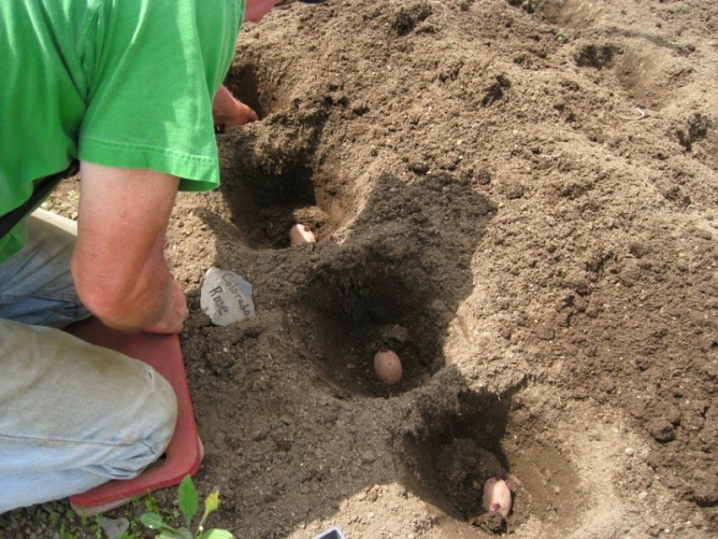
For good yields, you need to take seriously the choice of seed tubers. They should be different:
- the presence of eyes;
- the same format;
- lack of damage and decay.
The sprouts should be firm, but not too long. If potatoes are cracked, good germination may not be expected.
The importance of the presence of eyes is due to the fact that such tubers are actively sprouting. If not, the potatoes will rot in the hole.
If small tubers were used, seedlings are likely to be unviable. The optimal size is a potato, like a chicken egg.
It is necessary to carefully sort the potatoes, sifting out tubers with unwanted formations. Leftover vegetables are not suitable for planting. Only selected materials are suitable.
Experienced farmers know all the tricks of planting potatoes. And the beginner is supposed to seriously delve into all the nuances and rules of the planting process. With the right actions, the harvest of potatoes will be enough both for nutrition and for future planting.

How long will it take for seedlings?
To understand when potatoes should sprout after planting with tubers, it is necessary to assess the climate in the zone of its growth. In the south, fresh seedlings are expected on day 10. If the young growth did not come out after 15 days, then there are reasons for slow maturation. In the northern regions, more time is given for this process. Seedlings appear about 15-25 days after sowing.
The timing of the emergence of seedlings in the open field is also influenced by the variety of potatoes. The earliest potato varieties are the fastest to germinate.The southern variety often fails to grow where the climate is colder. But the species for the northern regions are not interfered with by any external factors. They grow equally well on time everywhere. It will be correct to find out the features of a certain variety in advance, so that there are no difficulties in the vegetative phase.
The first potato shoots sprout in the spring, when the ground warms up to 10 degrees. This occurs 25 days after landing. When the temperature is kept in the range of 20 degrees for a long time, the seedlings will appear even earlier, on the 14-15th day.
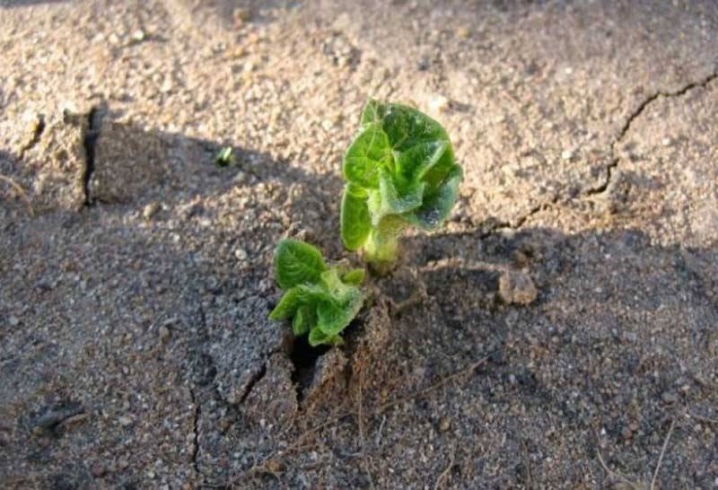
To get a harvest faster, you need to plant potatoes shallowly, since the presence of tubers in unheated soil layers will inhibit their development.
Planting is undesirable when the substrate moisture content is in the range of 75%. It is worth postponing and preventing putrefactive diseases of the culture of the Solanaceae family.
When choosing planting dates, you need to take into account that not only excess moisture, but also drought can harm the seedlings. And if early ripening varieties are planted earlier, then the harvest will be early. At the same time, processing of bushes for the prevention of pests is not required. But it is important to bear in mind that it is quite difficult to store early varieties.
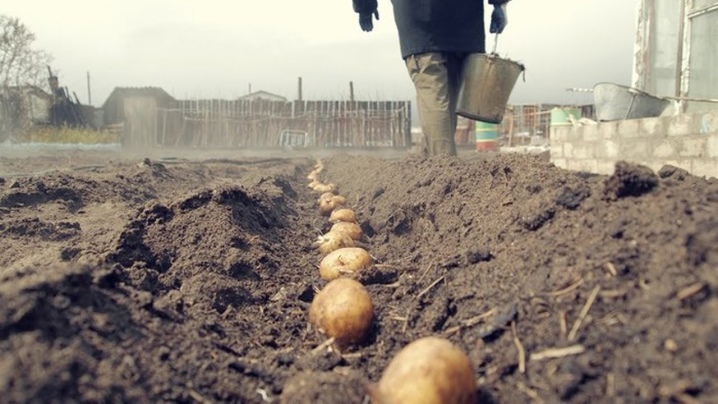
Benefits of early planting
Many gardeners are intimidated by the late drop in temperature, and they delay the planting procedure until it settles. But even if the frost grabs the green mass, the darkened plant has every chance of recovering later. And nitrogen fertilizing, prudently introduced into the ground on the site, will help the plant to cope with the cold weather.
Good protection of the tuber is provided by organic matter introduced under each bush in the form of rotted nitrogen in an amount of 0.5 kg. Such a measure will naturally warm up the soil. Covering hilling will help keep the seedlings warm, guaranteeing a quick vegetation.
Interestingly, even a late snowfall after planting potatoes contributes to an increase in yield, because the soil is additionally saturated with moisture.
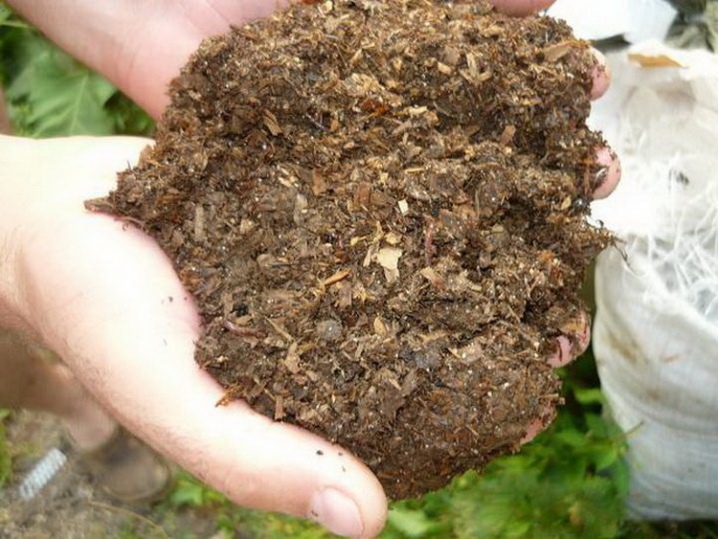
If you tighten up with planting, the tubers will end up in an overdried and steamed substrate, which will have a bad effect on yield. When the air heats up to 29 degrees, and at night the indicator on the street thermometer does not drop down from the 20 + mark, the tubers stop growing, but the tops begin to increase. This is the advantage of early landing.
It is worth noting that the warmer the ground, the more quickly the shoots will appear. The soil, warmed up to 18 degrees, reduces the expectation of shoots by 7 days. An approximate effect is achieved by early germination of tubers - sprouts can be expected 6-10 days less.
Basically, potato sprouts of any variety hatch after 1 month. There are also special early ripening varieties of the vegetable in question, which are supposed to be dug out after 40 days from the moment the planting was made.

In central Russia, and specifically in the northern districts of the Moscow region and the Moscow region, about 23 days are given for the emergence of shoots. In the Rostov region, potato seedlings of medium early varieties emerge from the ground on the seventh day, in Siberia - after three weeks.
In addition to objective weather conditions, germination also depends on whether the tubers were prepared in advance. Experienced farmers take care of the vernalization of tubers in accordance with the growing season for the selected variety.
Early varieties "wake up" in 15–20 days, when they form shoots. Potato varieties of late yield are characterized by inhibited metabolism. Shoots are formed 20–25 days after vernalization.
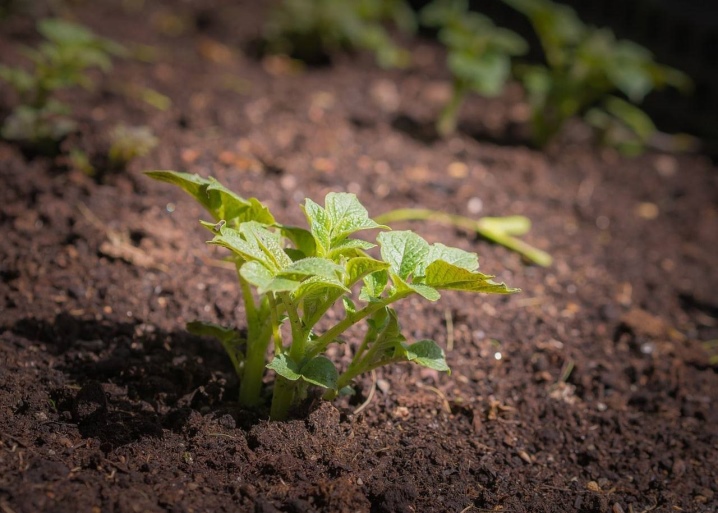
When sprouting tubers, it is worth focusing on the condition of the shoots themselves. They should not be allowed to grow more than 4–5 cm. Long shoots are fragile. During planting, they are damaged, and the roots are formed worse.
In general, you can focus on the germination table:
- for the southern regions, 10-15 days are allotted for the formation of sprouts;
- in mid-latitudes, the waiting period is up to 3 weeks;
- in the northwest region - from 3 to 4 weeks.
Any potatoes from the cellar or after vernalization will germinate in a time predetermined by nature itself - 3-4 weeks. When germinating, the sprouts are fed from the mother tuber. Due to this, the term for the appearance of seedlings is shifted. If, after 4–5 weeks, the potatoes have not sprouted, you will have to act quickly.
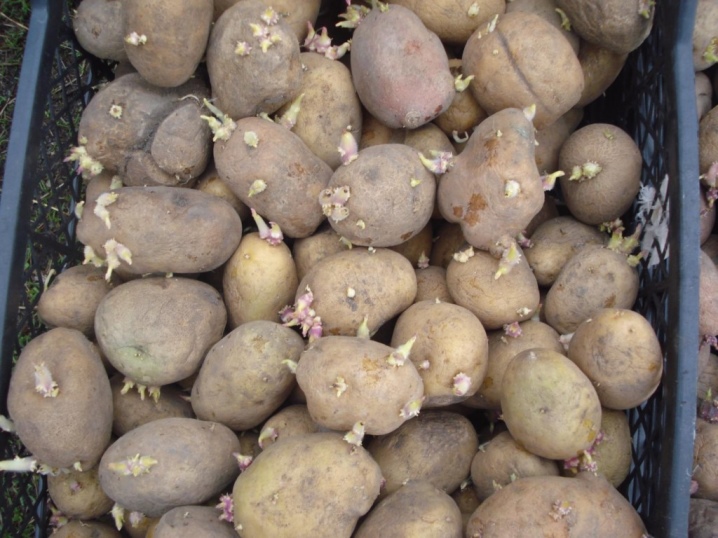
How to accelerate the emergence of sprouts?
To shorten the ripening time, you can follow the recommendations listed below.
- Sprout potatoes before planting.
- Mulch the soil after planting. This will help protect the plants from pests. In addition, mulching will help create the right temperature for the potato crop to ripen.
- Plant tubers with "eyes" up.
- Prepare the soil in advance by introducing mineral fertilizers and organic matter into it. The nutrient substrate will provide the culture with the proper level of development.
- After the growth appears, fertilize the potatoes with urea or ammonium sulfate. This will support the plant during the growing season.
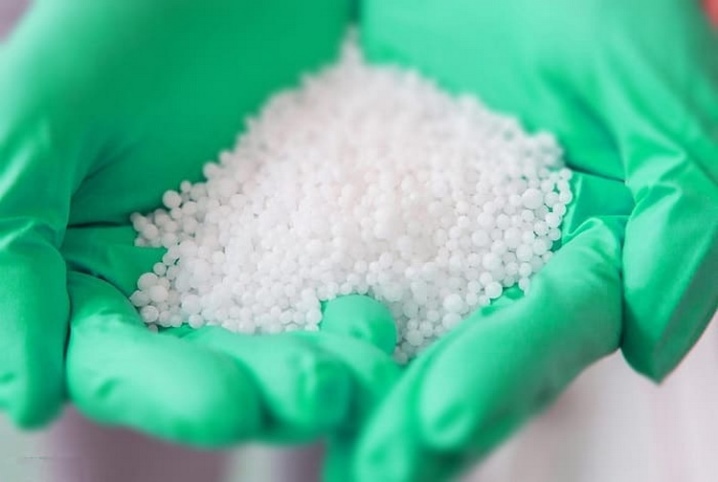
Possible problems
Having an awareness of the timing of the emergence of potato shoots from the date of planting, it is possible to identify possible problems in a timely manner. If the time has come, but no shoots are found, you need to figure out what caused the inhibition of growth.
To do this, you need to inspect the tubers. Dig holes and check them for damage from pests or diseases. With a large-scale defeat, it is necessary to dig up the tubers and immediately destroy. The soil should be treated with insecticides or suitable fungicides. In this case, you will have to plant a new crop elsewhere.
If during excavation it is found that everything is in order with the tubers, you will have to take care of the best conditions for ripening. Irrigation and fertilization will saturate the planting with the necessary elements. Increased portions of fertilizers are not required - this will only harm the crop.
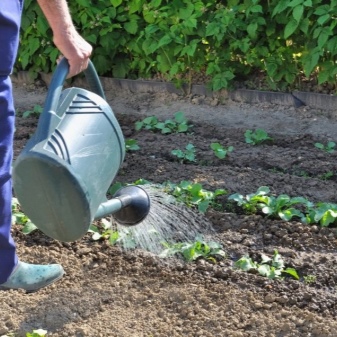

During the cold season, potatoes should be covered to protect them from freezing. It is important to remove weeds that will "survive" the fresh growth.
In the interests of obtaining a large yield, it is desirable to process the plants to protect them from pests and colonize with pathogenic bacteria. This is done no later than 14 days after the appearance of the first seedlings.
If there is no sense from any of the listed measures, most likely, poor-quality planting material is to blame. It needs to be replaced with liquid tubers.
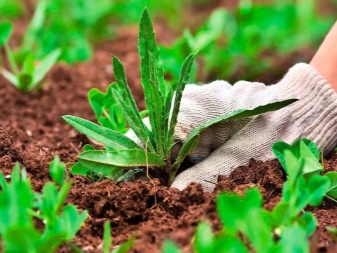
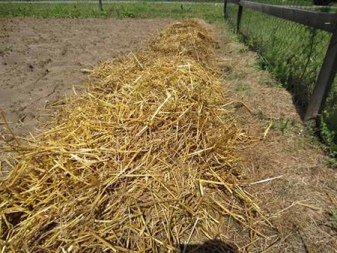
Uneven seedlings
It happens that the potatoes take too long to sprout, and the shoots appear unevenly. If the reason lies not in a violation of temperature standards, you will have to consider other likely negative circumstances.
- Tubers differ in shape. Massive specimens take longer to germinate, and small tubers hatch earlier than others. Small seeds give weakened sprouts, which soon die off.
- Mixing varieties. Each species differs not only in taste and shape, but also in terms of development. Due to this factor, the appearance of shoots will be uneven. In this case, the fact that the shoots have sprung up "unfriendly" is to blame for the indiscretion of the farmer.
- Immersion depth of tubers. It is recommended to plant according to a certain scheme. With holes of different sizes, the tops will germinate with a delay.
If potatoes are planted according to all the rules, problems have no chance of development. The more time will be spent initially, the less complications are expected in the future. Errors are difficult to correct, but they are almost always prevented in the bud.

No germination
With a sharp change in temperature (day versus night), potato tubers will remain frozen in the ground. With the arrival of heat, green sprouts will hatch. The plant can withstand a slight drop in temperature. But against such weather disasters as severe frosts, the seed is powerless. Then the potato shrivels, turning into miniature tubers.
For the growing season, the moisture content of the substrate is important. On dry soil, the tubers will not have enough moisture and nutrition. They will dry out before they can ascend. And, on the contrary, stagnation of moisture in the area will inevitably entail their decay.
To what depth to make holes is determined by the composition of the soil. In a heavy and clayey substrate, tubers are buried 8–10 cm, and in light sandy loam soils, this can be done up to 12–15 cm. Potato shoots will germinate evenly and in a timely manner.
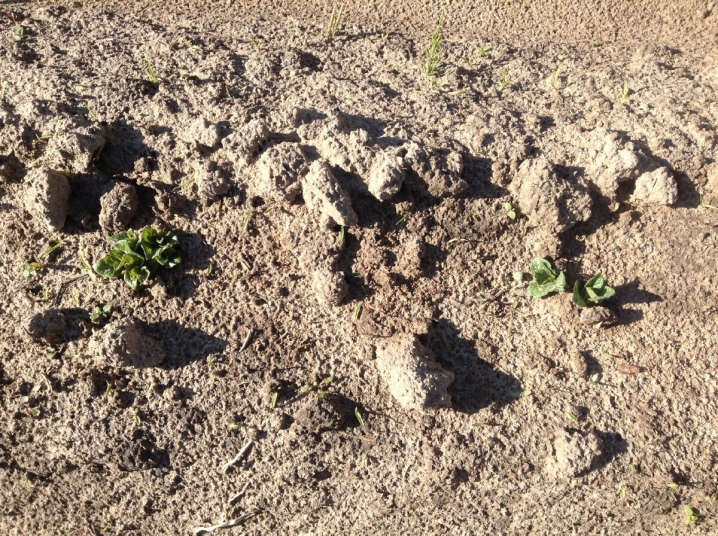
If the planting did not germinate, the plants need to be fertilized.
- Prepare a barrel with a volume of 100 liters, pour 10 kg of nettle and 1 bucket of manure into it. It must be rotten. Organic raw materials on nettle are infused for at least 5 days before use. Watering plants with nettle-dung essence is necessary in a diluted form (in a ratio of 3: 1). Each potato bush takes a 0.5-liter volume.
- You can dissolve bird droppings in an infusion on nettle. Or use tap water for dilution at a rate of 1: 20. The fertilizer must be used for its intended purpose immediately after preparation, otherwise it will lose its useful qualities.
- Mineral complexes are also suitable for fertilization. If the bush plantings are located in two rows, a 5 cm groove is dug in the middle of the garden bed, into which granular fertilizer is added (5 g per 1 meter of the planted area).
- For early varieties and when sprouts freeze, use nitroammophos, and varieties of the late ripening period are suitable for nitrophoska. Then the ditch is covered with earth, and the bed is watered.
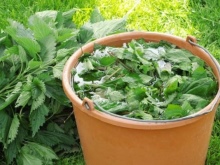
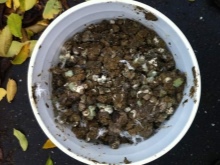

For stunted or frozen soil, foliar feeding will be required.
- in 10 liters of water, stir 20 g of urea or apply fertilizer to the soil with a whole complex of trace elements;
- in order to increase the immunity of plantings, it is recommended to process them by spraying "Biostim" immediately after the emergence of seedlings.
It happened that the gardeners did not wait for the seedlings of potatoes at all. It would seem that all the necessary technologies have been followed, but not a single sprout has been observed. Such a negative experience provokes the storage of potatoes in synthetic wicker bags. Since the tubers were in contact with this material for a long time, the chances of germination became zero. Storing seeds in such bags is unacceptable!
One has only to delve into the intricacies of planting and the choice of tubers, as a generous harvest of potatoes will appear in the future. Dishes made from self-grown fruits are the tastiest!
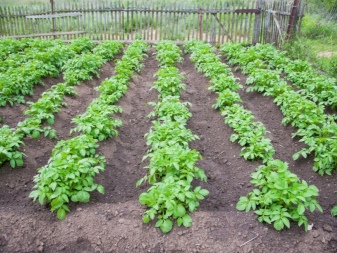














The comment was sent successfully.